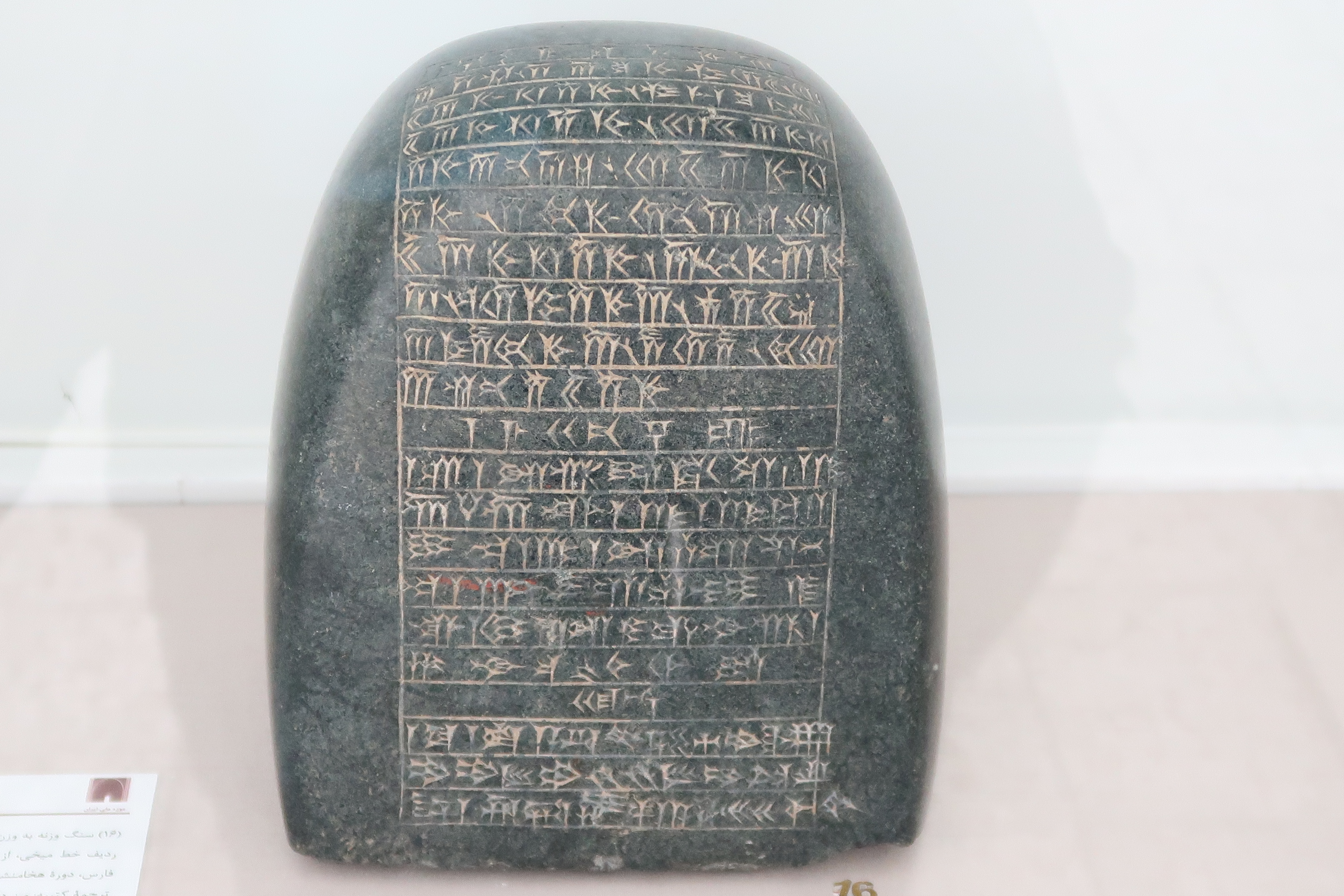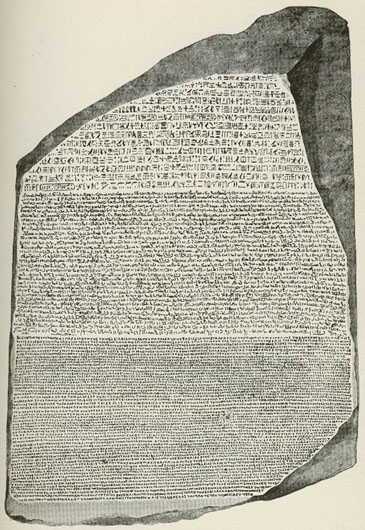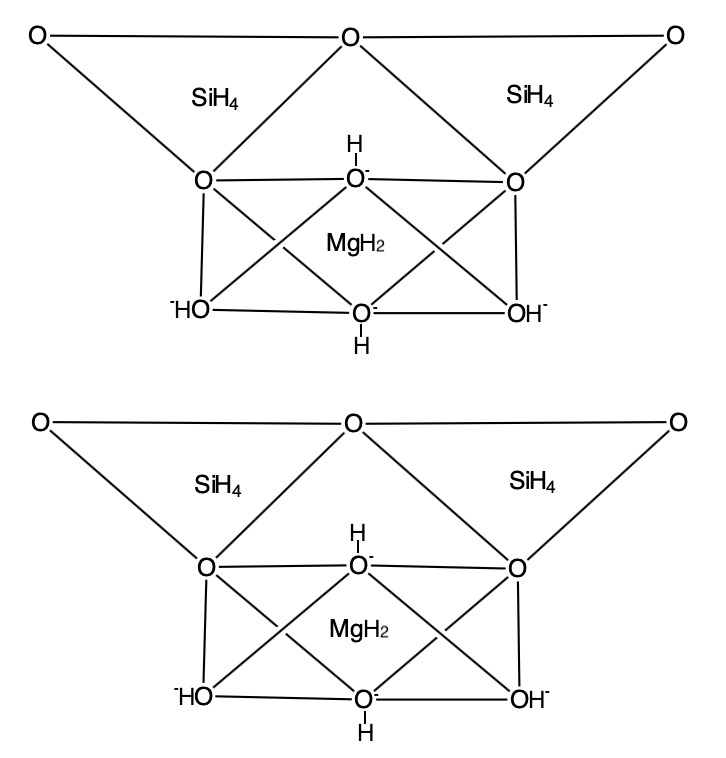|
Stone (weight)
The stone or stone weight (abbreviation: st.) is an English and British imperial unit of mass equal to 14 avoirdupois pounds (6.35 kg). The stone continues in customary use in the United Kingdom and Ireland for body weight. England and other Germanic-speaking countries of Northern Europe formerly used various standardised "stones" for trade, with their values ranging from about 5 to 40 local pounds (2.3 to 18.1 kg) depending on the location and objects weighed. With the advent of metrication, Europe's various "stones" were superseded by or adapted to the kilogram from the mid-19th century onward. Antiquity The name "stone" derives from the historical use of stones for weights, a practice that dates back into antiquity. The Biblical law against the carrying of "diverse weights, a large and a small" is more literally translated as "you shall not carry a stone and a stone (), a large and a small". There was no standardised "stone" in the ancient Jewish world ... [...More Info...] [...Related Items...] OR: [Wikipedia] [Google] [Baidu] |
Bronze
Bronze is an alloy consisting primarily of copper, commonly with about 12–12.5% tin and often with the addition of other metals (including aluminium, manganese, nickel, or zinc) and sometimes non-metals (such as phosphorus) or metalloids (such as arsenic or silicon). These additions produce a range of alloys some of which are harder than copper alone or have other useful properties, such as strength, ductility, or machinability. The archaeological period during which bronze was the hardest metal in widespread use is known as the Bronze Age. The beginning of the Bronze Age in western Eurasia is conventionally dated to the mid-4th millennium BCE (~3500 BCE), and to the early 2nd millennium BCE in China; elsewhere it gradually spread across regions. The Bronze Age was followed by the Iron Age, which started about 1300 BCE and reaching most of Eurasia by about 500 BCE, although bronze continued to be much more widely used than it is in modern times. Because historica ... [...More Info...] [...Related Items...] OR: [Wikipedia] [Google] [Baidu] |
Weights And Measures Acts (UK)
Weights and Measures Acts are acts of the British Parliament determining the regulation of weights and measures. It also refers to similar royal and parliamentary acts of the Kingdoms of England and Scotland and the medieval Welsh states. The earliest of these were originally untitled but were given descriptive glosses or titles based upon the monarch under whose reign they were promulgated. Several omnibus modern acts have the short title " Weights and Measures Act" and are distinguished by the year of their enactment. Background There have been many laws concerned with weights and measures in the United Kingdom or parts of it over the last 1,000 or so years. The acts may catalogue lawful weights and measures, prescribe the mechanism for inspection and enforcement of the use of such weights and measures and may set out circumstances under which they may be amended. Modern legislation may, in addition to specific requirements, set out circumstances under which the incumbe ... [...More Info...] [...Related Items...] OR: [Wikipedia] [Google] [Baidu] |
National Institute Of Standards And Technology
The National Institute of Standards and Technology (NIST) is an agency of the United States Department of Commerce whose mission is to promote American innovation and industrial competitiveness. NIST's activities are organized into Outline of physical science, physical science laboratory programs that include Nanotechnology, nanoscale science and technology, engineering, information technology, neutron research, material measurement, and physical measurement. From 1901 to 1988, the agency was named the National Bureau of Standards. History Background The Articles of Confederation, ratified by the colonies in 1781, provided: The United States in Congress assembled shall also have the sole and exclusive right and power of regulating the alloy and value of coin struck by their own authority, or by that of the respective states—fixing the standards of weights and measures throughout the United States. Article 1, section 8, of the Constitution of the United States, ratified i ... [...More Info...] [...Related Items...] OR: [Wikipedia] [Google] [Baidu] |
Weights And Measures Act 1835
Weights and Measures Acts are acts of the British Parliament determining the regulation of weights and measures. It also refers to similar royal and parliamentary acts of the Kingdoms of England and Scotland and the medieval Welsh states. The earliest of these were originally untitled but were given descriptive glosses or titles based upon the monarch under whose reign they were promulgated. Several omnibus modern acts have the short title "Weights and Measures Act" and are distinguished by the year of their enactment. Background There have been many laws concerned with weights and measures in the United Kingdom or parts of it over the last 1,000 or so years. The acts may catalogue lawful weights and measures, prescribe the mechanism for inspection and enforcement of the use of such weights and measures and may set out circumstances under which they may be amended. Modern legislation may, in addition to specific requirements, set out circumstances under which the incumben ... [...More Info...] [...Related Items...] OR: [Wikipedia] [Google] [Baidu] |
United Kingdom Of Great Britain And Ireland
The United Kingdom of Great Britain and Ireland was the union of the Kingdom of Great Britain and the Kingdom of Ireland into one sovereign state, established by the Acts of Union 1800, Acts of Union in 1801. It continued in this form until 1927, when it evolved into the United Kingdom, United Kingdom of Great Britain and Northern Ireland, after the Irish Free State gained a degree of independence in 1922. It was commonly known as Great Britain, Britain or England. Economic history of the United Kingdom, Rapid industrialisation that began in the decades prior to the state's formation continued up until the mid-19th century. The Great Famine (Ireland), Great Irish Famine, exacerbated by government inaction in the mid-19th century, led to Societal collapse, demographic collapse in much of Ireland and increased calls for Land Acts (Ireland), Irish land reform. The 19th century was an era of Industrial Revolution, and growth of trade and finance, in which Britain largely dominate ... [...More Info...] [...Related Items...] OR: [Wikipedia] [Google] [Baidu] |
5 Geo
5 (five) is a number, numeral (linguistics), numeral and numerical digit, digit. It is the natural number, and cardinal number, following 4 and preceding 6, and is a prime number. Humans, and many other animals, have 5 Digit (anatomy), digits on their Limb (anatomy), limbs. Mathematics 5 is a Fermat prime, a Mersenne prime exponent, as well as a Fibonacci number. 5 is the first congruent number, as well as the length of the hypotenuse of the smallest integer-sided right triangle, making part of the smallest Pythagorean triple (3, 4, 5). 5 is the first safe prime and the first good prime. 11 forms the first pair of sexy primes with 5. 5 is the second Fermat number, Fermat prime, of a total of five known Fermat primes. 5 is also the first of three known Wilson primes (5, 13, 563). Geometry A shape with five sides is called a pentagon. The pentagon is the first regular polygon that does not Tessellation, tile the Plane (geometry), plane with copies of itself. It is the ... [...More Info...] [...Related Items...] OR: [Wikipedia] [Google] [Baidu] |
Weights And Measures Act 1824
Weights and Measures Acts are acts of the British Parliament determining the regulation of weights and measures. It also refers to similar royal and parliamentary acts of the Kingdoms of England and Scotland and the medieval Welsh states. The earliest of these were originally untitled but were given descriptive glosses or titles based upon the monarch under whose reign they were promulgated. Several omnibus modern acts have the short title " Weights and Measures Act" and are distinguished by the year of their enactment. Background There have been many laws concerned with weights and measures in the United Kingdom or parts of it over the last 1,000 or so years. The acts may catalogue lawful weights and measures, prescribe the mechanism for inspection and enforcement of the use of such weights and measures and may set out circumstances under which they may be amended. Modern legislation may, in addition to specific requirements, set out circumstances under which the incumbe ... [...More Info...] [...Related Items...] OR: [Wikipedia] [Google] [Baidu] |
Encyclopædia Britannica
The is a general knowledge, general-knowledge English-language encyclopaedia. It has been published by Encyclopædia Britannica, Inc. since 1768, although the company has changed ownership seven times. The 2010 version of the 15th edition, which spans 32 volumes and 32,640 pages, was the last printed edition. Since 2016, it has been published exclusively as an online encyclopedia, online encyclopaedia. Printed for 244 years, the ''Britannica'' was the longest-running in-print encyclopaedia in the English language. It was first published between 1768 and 1771 in Edinburgh, Scotland, in three volumes. The encyclopaedia grew in size; the second edition was 10 volumes, and by its fourth edition (1801–1810), it had expanded to 20 volumes. Its rising stature as a scholarly work helped recruit eminent contributors, and the 9th (1875–1889) and Encyclopædia Britannica Eleventh Edition, 11th editions (1911) are landmark encyclopaedias for scholarship and literary ... [...More Info...] [...Related Items...] OR: [Wikipedia] [Google] [Baidu] |
Eschborn
Eschborn () is a town in the Main-Taunus district, Hesse, Germany. It is part of the Frankfurt Rhein-Main Regional Authority, Frankfurt Rhein-Main urban area and has a population of 21,488 (2018). Eschborn is home to numerous corporations due to its proximity to Frankfurt and relatively low business tax rate. Geography Location Most of "old" Eschborn is on the streets Hauptstraße, near the Eschborn S-Bahn station, and Unterortstraße, including the Rathaus (Town Hall) and some old churches. The village of Niederhöchstadt is part of Eschborn, but with a different phone area code (same as the adjacent community of Kronberg). Between Eschborn and the communities to the north and west are particularly green stretches with some pretty houses, nice walks in the foothills of the Taunus mountains. Eschborn is also near some popular supermarkets such as Globus.But there also some small shops like Nahkauf,and there's a pretty popular Ice Cream cafe. Landscape Eschborn provides expansive ... [...More Info...] [...Related Items...] OR: [Wikipedia] [Google] [Baidu] |
Serpentine Subgroup
Serpentine subgroup (part of the kaolinite-serpentine group in the category of phyllosilicates) are greenish, brownish, or spotted minerals commonly found in serpentinite. They are used as a source of magnesium and asbestos, and as decorative stone. The name comes from the greenish color and smooth or scaly appearance from the Latin , meaning "snake-like". Serpentine subgroup is a set of common rock-forming hydrous magnesium iron phyllosilicate () minerals, resulting from the metamorphism of the minerals that are contained in mafic to ultramafic rocks. They may contain minor amounts of other elements including chromium, manganese, cobalt or nickel. In mineralogy and gemology, serpentine may refer to any of the 20 varieties belonging to the serpentine subgroup. Owing to admixture, these varieties are not always easy to individualize, and distinctions are not usually made. There are three important mineral polymorphs of serpentine: antigorite, lizardite and chrysotile. Serpe ... [...More Info...] [...Related Items...] OR: [Wikipedia] [Google] [Baidu] |
Yale Medical Library
The Harvey Cushing and John Hay Whitney Medical Library is the central library of the Yale School of Medicine, Yale School of Nursing, and Yale-New Haven Hospital in New Haven, Connecticut. History The Library was built in 1941 as a Y-shaped addition to the Sterling Hall of Medicine designed by Grosvenor Atterbury with funds from the estate of John William Sterling. The Library was renovated and enlarged in 1990 with funds from Betsey Cushing Whitney. The architects were Alexander Purves and Allan Dehar. After the renovation, the Library was named for Betsey Cushing Whitney's father, Harvey Cushing, the pioneering neurosurgeon, Yale graduate and Sterling Professor, and her husband, John Hay Whitney, the businessman, Yale graduate and philanthropist. The library was again renovated in 2019. Medical Historical Library The Medical Historical Library was founded by Harvey Cushing, John F. Fulton, and Arnold C. Klebs in 1941 and possesses an internationally important coll ... [...More Info...] [...Related Items...] OR: [Wikipedia] [Google] [Baidu] |






